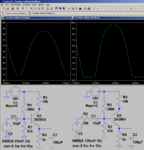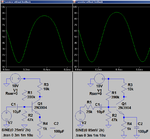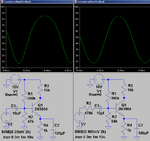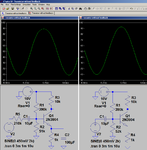LvW
Advanced Member level 6

Re: how does the transistor amplify ?
DC supply of 10 volts. DC operating point of app. +5 volts. Output swing of (+/-) 4 volts. No signal feedback. Results as expected. Bad application.
...every signal source?Almost every signal source is a fairly high resistance current source.
Yes - no surprise.Here is a common-emitter transistor with a sinewave voltage source. The input is a sinewave but the output isn't:
DC supply of 10 volts. DC operating point of app. +5 volts. Output swing of (+/-) 4 volts. No signal feedback. Results as expected. Bad application.





